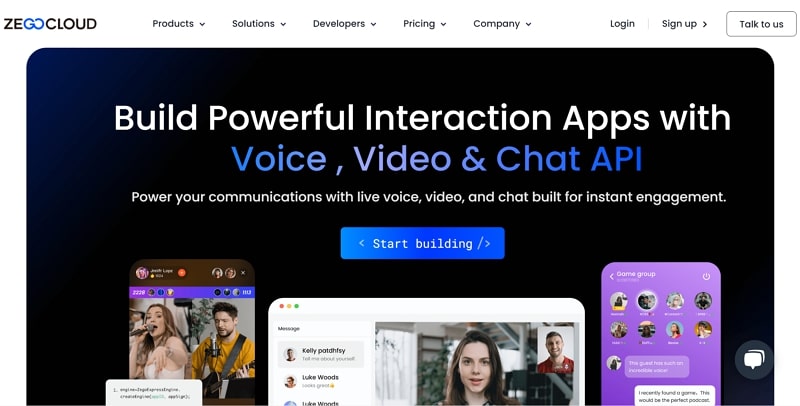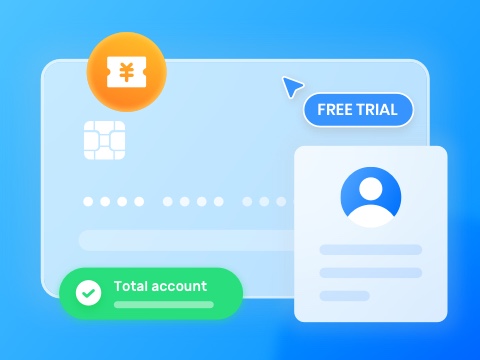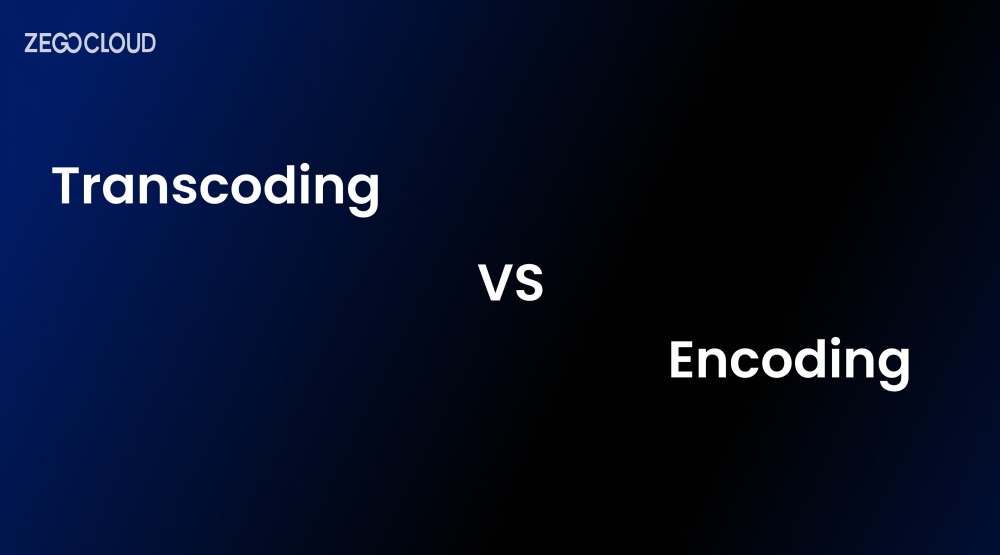When dealing with digital video, terms like encoding vs. transcoding often come up, sometimes interchangeably. However, you need to understand the distinction between the two to optimize streaming or archiving tasks. Generally speaking, encoding represents the initial process of converting raw videos, while transcoding involves the format conversion of encoded files. This article aims to describe the major differences between encoding and transcoding.
What is Video Encoding?
While managing visual content, creators will be able to optimize their files and improve the compatibility of their videos. In this regard, video encoding emerges as the process of converting raw footage into a digital format with the use of a codec. Using this process, you can compress the videos to make them suitable for storage, playback, and distribution.
As a result of this video encoding operation, you get the ability to reduce the size of the videos to optimize them for streaming or other forms of digital delivery. When comparing video encoding vs. transcoding, the latter only changes the format of the already encoded video. However, encoding involves both the compression of the visual data and the use of containers, such as MP4 or MOV, to encapsulate the compressed video streams.
When You Need to Encode Video?
Both encoding and transcoding play their part in optimizing the video for a broader use case across multiple platforms. However, you need to know the specific applications of both these processes to understand their importance in a better manner. Let’s go through these points and learn the specific scenarios where the use of encoding is preferred:
- Optimizing for Streaming: Video content creators prefer to utilize encoding when preparing videos for streaming platforms. As we know, this video management process compresses the files to a manageable size while maintaining quality, so creators use encoding to deliver smooth playback over various internet speeds.
- Ensuring Device Compatibility: When talking about visual content, different devices and platforms have specific format requirements. This encoding process converts the video into a compatible format to let users play it on smartphones, computers, and TVs. Moreover, video encoding and transcoding both play their role in boosting the compatibility of content.
- Enhancing Playback Performance: As we know, properly encoded videos load faster and play more smoothly. Therefore, content creators should encode their videos to adjust the bitrate and resolution to match the capabilities of the playback device, preventing buffering and lag.
- Preserving Quality for Distribution: When distributing video content, video content creators always want to maintain high quality. For this purpose, they can utilize encoding to create standardized files that can be easily distributed and played back without degradation.
How Does Video Encoding Work?
When comparing transcoding vs. encoding, the latter involves a complex process to streamline the size metrics of the video content. In this section, we will talk about how an encoding tool works to compress the size of your visual content.
- Eliminating Redundant Frames After Analysis: To start the encoding task, these advanced tools divide the raw visual data into individual frames. Moving forward, these video encoders evaluate each of these frames to dig out and remove any unnecessary information. Upon completing this process, creators get a file with a highly reduced size.
- Video Data Encoding: Afterward, this encoding software proceeds to encode the compressed visual information using a specific codec. Other than that, an ideal encoder will allow you to decode digital data to transform the compressed video into a simple-to-store format.
- Packaging into a Container: After the video is properly encoded, these tools get into the action to package the previously processed data into a container. In addition to the visual content, the containers store the encoded audio and subtitles.
- Final Encoded Video: Once the process is done and dusted, you will get the fully encoded video that you can store or stream in any way you want.
What is Video Transcoding?
As mentioned, encoding and transcoding serve different purposes when it comes to managing video content. Keeping these differences in view, we can define video transcoding as the procedure that converts visual content from one format to another. During this process, the original video is decoded to an uncompressed format and again re-encoded into a different format suitable for various devices.
With the help of this transcoding task, you can ensure the compatibility of your videos with different media players. Other than that, this process even helps you reduce file size and adjust the video quality to match bandwidth limitations.
When Transcoding Video is Necessary?
While talking about the difference between encoding and transcoding, we have analyzed the role of the transcoder in changing file format. Now, let’s explore its other use cases to learn when to utilize such a method while dealing with video content.
- Platform Compatibility: We recommend you make use of video transcoders to ensure you can play a video file on different devices and platforms. Not all devices support all video formats and codecs, so transcoding can convert the video to a compatible format.
- Live Streaming Optimization: Live events, including sports matches and webinars, depend on transcoding software to modify the file format for various end devices. Adjusting the video file to suit a user’s device also ensures a high-quality viewing experience. To do so, you can utilize adaptive streaming formats like HTTP Live Streaming.
- Quality Adjustment: With the help of these transcoders, you can also change the video resolution or bitrate to match the desired quality. This can be useful for optimizing videos for different internet speeds or device capabilities. Both encoding and transcoding play their part in maximizing the quality of the visual content based on the bandwidth.
- Online Video Meetings: Many online meeting platforms make use of video transcoders to present a high-quality stream to the attendees. Besides, these platforms employ adaptive streaming to adjust the playback quality and format according to the internet connection speed.
Difference Between Encoding and Transcoding?
After getting a general introduction to both these processes, it is time to dig deeper into the video encoding vs. transcoding debate. For this purpose, we will put forward a detailed comparison table to help you get a better idea about both these video quality management processes.
| Metrics | Encoding | Transcoding |
|---|---|---|
| Definition | When talking about the transcoding vs. encoding debate, the latter plays its role in compressing raw files to optimize the transmission of visual content. | In contrast, transcoding refers to the task through which you can optimize video format for better device compatibility. |
| Input | Usually, this process accepts input in the form of raw video data. | On the other hand, transcoders take already encoded video files, such as MKV, as the input. |
| Output | As an output, this format gives compressed and formatted video files, including H.264. | When comparing transcoding vs. encoding, the first one provides a new video file in a format different from the original. |
| Video Format Conversion | No | Yes |
| Reduce File Size | Yes | No |
| Tools | LAME (for MP3), x264 (for H.264), zlib (for Data Compression) | HandBrake, FFmpeg, Adobe Media Encoder |
| Use Cases | Encoding data for secure transmission, Optimizing bitrate and size | Streaming services convert video files to different bandwidths, Preparing videos for social media platforms |
How Do Encoding and Transcoding Affect Video Quality?
Upon understanding the difference between encoding and transcoding, let’s discuss the different ways through which they affect video quality. Here, we will analyze the effect of both these processes on your visual content quality one by one:
1. Encoding
During the encoding process, you can compress your visual content to reduce its file size while attempting to maintain its quality. To do so, this process utilizes codecs, such as H.264 or H.265, to perform the compression.
Throughout this process, the quality of the encoded video will be affected by factors like the bitrate, resolution, and the efficiency of the codec. Generally, higher bitrates result in better quality but larger file sizes, so you need to balance both factors.
2. Transcoding
When comparing video encoding vs. transcoding, the latter is necessary for compatibility with different platforms. However, transcoding can lead to a loss in video quality, especially if the process involves converting to a lower bitrate or a less efficient codec. To minimize quality loss, you need to utilize high-quality source files and efficient codecs suitable for the process.
Your Options for an Encoder or Transcoder
Once you realize the importance of encoding and transcoding, you may start the search for these video optimization tools. To facilitate your research, we will present different tools and algorithms that can help you carry out these processes. When talking about encoders, they represent software that can compress and reduce the size of the videos.
Some major platforms containing encoders for live streaming include ZEGOCLOUD. On the other hand, transcoders represent any local or cloud-based tool that converts encoded videos into some other format. In this regard, the best examples of video transcoders include tools like FFmpeg and HandBrake.
Elevate Your Video Conferencing Experience with ZEGOCLOUD
Professionals who want to improve the ways they interact through online meeting platforms can use APIs provided by ZEGOCLOUD. Using these APIs and SDKs, they can integrate voice and video calling features into their workflow for seamless communication. Moreover, these APIs offer ultra-low latency of 300ms during video calls to avoid any buffering or lag.

With its live-streaming API, you can enjoy latency as low as 600ms while carrying out interactive streaming sessions. Other than that, ZEGOCLOUD supports an H.265 video encoder that compresses your video during video calling and live streaming without affecting the quality. Due to the integration of this encoder, its API/SDK lets you enjoy a lag-free video conferencing experience.
Conclusion
Throughout this article, we have discussed some differences between encoding and transcoding that can help you understand their functionalities. After recognizing their importance in video content optimization, you should utilize these video encoders and transcoders to smoothen streams. Professionals who regularly interact with their colleagues through video conferencing should integrate encoding-powered APIs delivered by ZEGOCLOUD for a smoother experience.
Read more:
Let’s Build APP Together
Start building with real-time video, voice & chat SDK for apps today!










